new posts in all blogs
Viewing: Blog Posts Tagged with: 2002, Most Recent at Top [Help]
Results 1 - 17 of 17
How to use this Page
You are viewing the most recent posts tagged with the words: 2002 in the JacketFlap blog reader. What is a tag? Think of a tag as a keyword or category label. Tags can both help you find posts on JacketFlap.com as well as provide an easy way for you to "remember" and classify posts for later recall. Try adding a tag yourself by clicking "Add a tag" below a post's header. Scroll down through the list of Recent Posts in the left column and click on a post title that sounds interesting. You can view all posts from a specific blog by clicking the Blog name in the right column, or you can click a 'More Posts from this Blog' link in any individual post.
The Hotel Mystery. (Whodunit Detective Agency #2) Martin Widmark. Illustrated by Helena Willis. 2002/2014. 80 pages. [Source: Library]
First sentence: Every year, on the day before Christmas Eve, nearly everyone in the little town of Pleasant Valley does the same thing: They all head to the holiday buffet at the town's hotel, where they find turkey, ham, roasted carrots, and mashed potatoes and gravy, all served on big platters in the beautiful dining room.
Premise/plot: Jerry and Maya are friends and classmates who formed the Whodunit Detective Agency. Over Christmas vacation, these two are working at the town's hotel. (Jerry's uncle works there.) The hotel is in great excitement because the hotel's best and most expensive suite has been rented out to a family, the Braeburn family. Making the new guests HAPPY is to be their top priority. But their stay is not uneventful, and before the book ends, Jerry and Maya will need to solve a crime.
My thoughts: This is the second book in the Whodunit Detective Agency series. It is an early chapter book with a lot of colorful illustrations. These mysteries are simple and straightforward. The characters aren't exactly complex and intriguing. But. I think for the intended age group, these mysteries are fine reading material.
© 2016 Becky Laney of
Becky's Book Reviews

By:
Becky Laney,
on 7/25/2016
Blog:
Becky's Book Reviews
(
Login to Add to MyJacketFlap)
JacketFlap tags:
J Fiction,
international literature,
J Mystery,
2014,
2002,
early chapter book,
library book,
books reviewed in 2016,
friendship,
Add a tag
Diamond Mystery (The Whodunit Detective Agency #1). Martin Widmark. Illustrated by Helena Willis. 2002/2014. 80 pages. [Source: Library]
First sentence: The streets were empty in the little town of Pleasant Valley.
Premise/plot: Jerry and Maya are classmates and friends who have opened a detective agency out of Maya's basement. They live in the small, quaint town of Pleasant Valley. The book opens with Mohammed Caret hiring these two child detectives to find out who is stealing diamonds from his shop. Their cover will be that he has hired these two children to do some light cleaning and run a few errands for him. They meet the three employees that work for him. And after a day of close observation, they are ready to solve the case.
My thoughts: I liked this one. I did. It's an early chapter book. I'd say just about right for second graders. It's the first in a mystery series for children. It has been translated into English from the Swedish.
© 2016 Becky Laney of
Becky's Book Reviews

By:
Becky Laney,
on 1/29/2016
Blog:
Becky's Book Reviews
(
Login to Add to MyJacketFlap)
JacketFlap tags:
books reviewed in 2016,
Nonfiction,
Holocaust,
World War II,
YA nonfiction,
j nonfiction,
mg nonfiction,
2002,
review copy,
2016,
Add a tag
Hana's Suitcase. Karen Levine. 2002/2016. Crown Books. 144 pages. [Source: Review copy]
Would I recommend Hana's Suitcase by Karen Levine? Yes, yes, a thousand times yes. This would be a great introduction to the subject of the Holocaust for elementary students. (My first "Holocaust book" was The Hiding Place by Corrie ten Boom. Do you remember your first Holocaust book?) One reason why I think it would be a good fit for young readers is the way the subject is approached. It is unusual and unique. It is a story about children learning about the Holocaust for the first time. It is about the learning process--the research process as well.
Chapters alternate between the present and the past. The "present" story begins with an empty suitcase, "Hana's" suitcase. This is an object found in a Japanese Holocaust museum. The children--and the director--are eager to know WHO IS HANA? They know her birth date, that she was Jewish, that she ended up in a Nazi concentration camp. But who was she? what did she look like? what was her family like? what was her childhood like? What happened to her? Did she survive? Did she die?
The present chapters narrate this learning-process, this investigation. I love that it illustrates history-coming-to-life, how fun and exciting history can be, even how relevant and important it can be to ask questions, to be persistent, to follow leads, etc.
There are also chapters set in the past that tell Hana's story, and tell it almost from her point of view. Readers ultimately learn that much of this information came from her brother who did survive the war. Because the chapters alternate, readers will get the answers to some questions before the people in the book.
I liked how these two stories come together. This one is worth reading.
© 2016 Becky Laney of
Becky's Book Reviews
Old MacDonald Had A Woodshop. 2002. Penguin. 32 pages. [Source: Library]
First sentence:
Old MacDonald had a shop, e-i-e-i-o! And in her shop she had a saw, e-i-e-i-o! With a zztt zztt here and a zztt zztt there, here a zztt, there a zztt, everywhere a zztt zztt. Old MacDonald had a shop, e-i-e-i-o.Premise/plot: Old MacDonald and other animals from the farm are building something, and they are using lots of different tools. But what are they building? Can you guess before the big reveal?
My thoughts: Loved this one from the very beginning, and I do mean the beginning. The endpapers of this one are very fun! Readers see all HER tools hanging up in the shop. Each one clearly labeled. Some may be familiar to children, others may not be. Regardless, it sets a great mood for the book. Instead of celebrating animal sounds, this book, this song, if you will, celebrates the sounds that tools make, and celebrates the act of building and designing.
Text: 4 out of 5
Illustrations: 4 out of 5
Total: 8 out of 10
© 2015 Becky Laney of
Becky's Book Reviews
Call the Midwife: A Memoir of Birth, Joy, and Hard Times. Jennifer Worth. 2002/2009. Penguin. 340 pages. [Source: Library]
I have now read all three of Jennifer Worth's memoirs. Yes, I read the first book in the series last because that's how the library fated it. This actually worked out okay because I was familiar enough with the television adaptation. First, I want to mention that I loved, loved, loved, LOVED the tv show. Did I enjoy the books as much, did I enjoy them equally well? Probably not. I loved the show more, I did. I'll be honest about that from the start.
But did I enjoy the books? Yes. I definitely did. But was the first book my favorite? I can't say that it was. There were things I liked/loved about all three books. And. There were things I didn't quite like about all three books.
What didn't I enjoy? Well. In this first book, for example, there are several chapters where the focus is on prostitution, the focus shifts in the narrative because Jenny Lee has met a pregnant prostitute, Mary, who's trying to escape her pimp and find somewhere (relatively) safe to keep her baby. As you might expect, it's a dark, ugly, nightmarish world she's describing. I don't fault her for being realistic and matter of fact. But the amount of detail involved in the telling is a bit much at times. I think it could have been retold with a little less detail and still conveyed the same impact.
What did I enjoy? Well, there was plenty to enjoy! Most of the chapters were enjoyable enough. Many of these chapters have been adapted as episodes for the show--though not all, I believe. And in some cases, the book presents a much fuller picture.
As far as the trilogy goes, there is in some ways a lot less focus on romance when compared to the adaptation. (Jane's romance being an exception in the second book.) But the trilogy is worth reading, maybe not for ALL fans, but for many fans. (I will say that the book is more graphic in description than the tv show.)
© 2015 Becky Laney of
Becky's Book Reviews

By:
Becky Laney,
on 4/17/2013
Blog:
Becky's Book Reviews
(
Login to Add to MyJacketFlap)
JacketFlap tags:
favorite books,
YA Fiction,
YA Fantasy,
J Fiction,
J Fantasy,
favorite authors,
YA Adventure,
J Adventure,
children's classic,
2002,
1937,
books reviewed in 2013,
Add a tag
The Annotated Hobbit. Revised and Expanded Edition. J.R.R. Tolkien. Annotated by Douglas A. Anderson. 2002. (1937, original Hobbit pub. date). Houghton Mifflin Harcourt. 416 pages.
The Hobbit is one of my favorite books even though I didn't discover it until I was an adult. It's a children's book that I've read several times as an adult. One of those feel-good books that you can happily, joyfully read each and every year without tiring of it. The Annotated Hobbit makes a lovely present for people who can't get enough of The Hobbit!
After viewing The Hobbit: The Unexpected Journey, I picked up The Annotated Hobbit. It was just what I needed! The film "covers" the first six chapters of the novel: "An Unexpected Party," "Roast Mutton," "A Short Rest," "Over Hill and Under Hill," "Riddles in the Dark," and "Out of the Frying-Pan Into the Fire." The most significant chapter in this annotated edition may just be "Riddles in the Dark." Fans most likely know already that the story of Bilbo's ring varies greatly from the original publication in 1937 and the later editions published after Tolkien wrote The Lord in the Rings, the variations even becoming a part of the story in a way. But this was the first time I was able to read the full, original ending to the story. (This is found in the notes on pages 128-131 and page 134.)
I came to the text needing to "check" the "faithfulness" of the film to the movie. True, I wanted to spend time with the characters, and, of course, I wanted to read it (again) because it's a great story. But. I wanted to see if the movie got it "wrong" or "right." While that was my original intention, I didn't always keep to it. I found the characters and story so irresistible. I was reminded once again of all the lovely little things that I just ADORE about the book. Things that didn't always translate as faithfully as I would have liked in the movie. Of course, some of what I ADORED about the book made it into the film, sometimes very faithful both in tone and detail.
There were some things that are technically "from the book" but taken completely out of proportion and focus, things that were made BIG AND SIGNIFICANT that barely got more than a sentence or two at most in the novel. The thing that stands out, for example, is how the party is HUNTED in the movie. Almost from the start, the journey is perilous because of a specific threat. And every single stage of the journey is equally dangerous and life-threatening. There is a purposeful, intentional darkness (evil) beginning to move in Middle Earth. In the novel, this isn't the case. The party faces danger, yes, sometimes a little danger, sometimes a lot of danger. But it isn't of an intentional hunted sort of danger. More of a being in the wrong place at the wrong time danger. They stumble almost on the trolls. (They also stumble upon the meeting place of the wolves or wargs.) And they face danger from rock slides and bad storms--but this is a natural threat. And yes, the stone giants exist but not so absurdly as in the movie:
There they were sheltering under a hanging rock for the night, and he lay beneath a blanket and shook from head to toe. When he peeped out in the lightning-flashes, he saw that across the valley the stone-giants were out, and were hurling rocks at one another for a game, and catching them, and tossing them down into the darkness where they smashed among the trees far below, or splintered into little bits with a bang. Then came a wind and a rain, and the wind whipped the rain and the hail about in every direction, so that an overhanging rock was no protection at all. Soon they were getting drenched and their ponies were standing with their heads down and their tails between their legs, and some of them were whinnying with fright. They could hear the giants guffawing and shouting all over the mountainsides.
"This won't do at all!" said Thorin. "If we don't get blown off, or drowned, or struck by lightning, we shall be picked up by some giant and kicked sky-high for a football."
"Well, if you know of anywhere better, take us there!" said Gandalf, who was feeling very grumpy, and was far from happy about the giants himself. (104)
The book doesn't exactly stay focused on the danger in any particularly threatening situation. The focus is on the adventure, the quest, the journey. There are plenty of in-between moments in the book. Moments where they might not be physically in danger from an enemy (goblins, trolls, angry elves, giant spiders), but might be facing discouragement, doubt, depression. Not to mention hunger, thirst, and exhaustion!!!
There were isolated scenes that were especially faithful to the book and lovely to watch! But there were plenty of scenes that were pure interpretation. For better or worse. The film shows that there is more than one way to "read" a book or story.
Reading The Annotated Hobbit was beneficial. It reminded me of the creative process involved in writing and storytelling. Reading the annotations showed me that Tolkien never stopped creating this story. It was NOT "the end" of the story when it was published in 1937. The story kept changing and transforming and evolving through the decades. Tolkien stayed involved in the story. If Tolkien himself kept changing the story as his fantasy world kept growing and expanding, then it only makes sense that the film would be free to do the same.
I personally enjoyed reading almost all of the annotations. Some notes are mainly textual revision notes, letting readers know the differences between the different editions of the text (1937, 1951, 1966, etc.) Other notes tend to be scholarly and focused on literature. But some provide insights on The Hobbit or Middle Earth. (I liked notes about authors that influenced Tolkien.)
© 2013 Becky Laney of
Becky's Book Reviews
Joe on the Go. (Green Light Readers, Level 1) Peggy Perry Anderson. 2012. Houghton Mifflin Harcourt. 32 pages."Let's go!" said Joe to Mother dear.
"Sorry, Joe, I am busy here."
"Let's go!" said Joe. Dad said, "No way. Today is family meeting day."
Then came cousins, uncles, and aunts. They came to visit, eat, and dance.Joe is a very energetic little frog. But no one at the frog family reunion wants to play with him. Each has a reason or excuse. Each tells him no and sends him away. But Joe keeps trying, surely, someone wants to play with him. He meets that someone....in Grandma.
The text, as you might expect, is repetitive and predictable making it just about right for young readers beginning to read on their own. And it could be a read aloud, as well, for parents to read to little ones.
Let's Clean Up. (Green Light Readers, Level 1) Peggy Perry Anderson. 2012. Houghton Mifflin Harcourt. 32 pages.Mother said, "I have the broom. Let's clean up this messy room." Mother cleaned high. Mother cleaned low. Mother cleaned the room for Joe. Another Joe adventure. Joe has an extremely messy room. His mom cleans the room, Joe is happy to see his floor again. He's eager to "rediscover" all his toys again. He makes his room a big, big mess. His mom is not happy that minutes later her son's room is out of control...again. The illustrations show her close to tears. But Joe has a way to make his mom happy again. He'll clean his room all by himself. And he'll do it much, much quicker. And, as long as his mom doesn't look in the yard, things should go well.
In October, two more early readers will be released:
Time for Bed, the Babysitter Said and
To The Tub.
Read Joe on the Go and Let's Clean Up
- If you're looking for early readers to share with young beginning readers
- If your little one likes frogs
© 2012 Becky Laney of
Becky's Book Reviews
Six Days In October: The Stock Market Crash of 1929. Karen Blumenthal. 2002. Simon & Schuster. 160 pages.
From the introduction:
The years after the First World War were a golden age for many Americans. The 1920s didn't just sing with the rhythms of jazz, or swing with the dancing of the Charleston; they roared with the confidence and optimism of a prosperous era. While I've read plenty of historical fiction set within the Great Depression time period, this is the first nonfiction book I've read (at least that I can remember) that details the Stock Market crash itself. In great detail--fascinating detail--Blumenthal traces these six days beginning with October 24, 1929. Each chapter focuses on an individual or two which adds a great deal to the human interest factor. Make these
economic facts relate to people,
real people, and you've got my attention. Some of the people she discusses were truly despicable people--at least when it came to
business.
I definitely enjoyed reading this one. I found it very interesting! It did win Sibert Honor in 2003.
Read Six Days in October
- If you're interested in history, in this historical time period.
- If you want a greater background in understanding the Depression
- If you're interested in the human side of economics
© 2012 Becky Laney of
Becky's Book Reviews
 Home to Harmony. Philip Gulley. 2002. HarperCollins. 225 pages.
Home to Harmony. Philip Gulley. 2002. HarperCollins. 225 pages.
When I was in the second grade, my teacher, Miss Maxwell, read from The Harmony Herald that one in every four children lived in China. I remember looking over the room, guessing which children they might be. I wasn't sure where China was, but suspected it was on bus route three.
One of the best, best, best books I've read lately. One of those books that had me at hello. It may not appeal to every one. I suppose you might say it is a little sentimental now and then. But. It is truly one of those cozy books that make you feel oh-so-happy. Or, I should say it made me feel oh-so-happy. There were chapters that had me laughing--really laughing hard. There were chapters that had me close to tears. And almost every chapter had something worth quoting. I realized this right away and didn't even try to mark them all. (Some books are like that.)
So the premise of this one is simple. Sam Gardner lives in the small town of Harmony. He went away--to school, to seminary--but now he's back. And unlike some in the town, he's very happy to be back, very happy to be living in Harmony. He understands--better than some--why it may not be a town for everyone, but to him it's right where he wants to be.
The book is a collection of stories. Some set in the past, some set in the present. The stories are arranged by season--spring, summer, fall, winter. And the stories are about the community, the people who live there or who have lived there. We meet Bob Miles Sr. and Dale Hinshaw. The narrator is a Quaker minister.
My favorite stories were: Miss Rudy, Wilbur, and Friday Nights; Burma-Shave; The Birds and the Bees; This Callous Pride; Mutiny; The Twins; Miriam and Ellis; and The Spelling Bee.
"He had been inoculated with a small dose of Christianity, which had kept him from catching the real thing." (51)
"When love takes you by the hand and leaves you better, that is home." (63)
"The Dale Hinshaw Effect is simply this: If there is a bad idea to be thought, Dale Hinshaw will think it." (67)
© 2011 Becky Laney of Becky's Book Reviews

When I heard a few years back that Jack Gantos had written a memoir about his imprisonment for drug running when he was twenty, I thought, Gee, you'd think there'd be some parent or adult group somewhere having a hissy fit about a childen's writer with a background like this. Not that I thought someone should have a hissy fit about it. It just seems like the kind of thing someone always is having a hissy fit about.
Hole in My Life is probably a book that every teenager ought to be forced to read. Holy Moses. Talk about a cautionary tale. And I don't think Gantos was trying to do the instructional thing. His writing style is very plain, but the story is an eye popper.
Seriously, even before he gets to the crime he talks about getting so drunk he was vomiting caustic substances. That sure makes being blind drunk look attractive. And before he got caught he had to worry about one of his co-conspirators killing him. Wouldn't a lot of young minds read this kind of thing and think, Nah, I'll just get a job at Target, after all?
Interesting note: Hole in My Life also deals with Gantos's evolution as a young writer, and his movement toward becoming a children's writer. While in prison, he enjoyed recalling his childhood and thinking of childhood events in terms of stories. Some of his short stories do have a very autobiographical feel to them.
Jack Gantos is the author of books of short stories and the Joey Pigza books.
Gossie and Gertie. Olivier Dunrea. 2002/2007. Houghton Mifflin Harcourt. 16 pages.
This is Gossie.This is Gertie. Gossie wears bright red boots.Gertie wears bright blue boots.They are friends. Best friends.I enjoyed Gossie & Gertie even more than Gossie. In this adventure, the goslings friendship is explored and defined. Readers may notice--or at least adult readers will notice--just how bossy Gossie is! How spirited. But Gertie is not one that is easily led. No, sometimes Gertie likes to have a say! And that's okay with Gossie. Especially if where he is leading her is to dinner!
The text is very fun, very playful. Proof that simple can be a very good thing! And the illustrations match that spirit well.
© 2011 Becky Laney of
Young Readers
Gossie. Olivier Dunrea. 2002/2007. Houghton Mifflin Harcourt. 16 pages.
This is Gossie, Gossie is a gosling.A small, yellow gosling who likes to wear bright red boots.Every day.I enjoyed this board book very much! I found the text to be playful and fun. I liked the repetition and predictability. I liked the character of Gossie very much. I liked her personality. In just a few words, I got a clear sense of what this gosling was
all about! I could tell that she was a character, if you know what I mean! Of course, the artwork has something to do with that too!
© 2011 Becky Laney of
Young Readers

By:
Becky Laney,
on 2/20/2010
Blog:
Becky's Book Reviews
(
Login to Add to MyJacketFlap)
JacketFlap tags:
family,
friendship,
YA Fiction,
brothers and/or sisters,
grief,
YA realistic fiction,
Simon and Schuster,
2002,
library book,
Add a tag
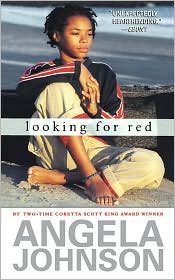
Looking for Red. By Angela Johnson. 2002. Simon & Schuster. 116 pages.
When I was four, I could read the newspaper backward and upside down. I would stand and read the newspaper and not know I was doing it. Then suddenly everyone realized I was reading. It was something that just happened to me. It wasn't strange or anything. Magic, almost.
There is something almost raw and yet tender about Angela Johnson's Looking For Red. Our narrator, Michaela or Mike as everyone calls her, is grieving the loss of her brother, Red. Everyone is grieving. His family. His friends. (Especially his best friend, Mark, and his girl friend, Mona.) To Mike it seems almost wrong that life should go on, that a new school year should begin, that the seasons change. If it could just stay summer, she thinks, then perhaps her brother would still feel present. Part of her feels him still, sees him still.
This one is well-written and very bittersweet.
It's Red who I think of every time I pick up a book, ride my bicycle, or hear someone laugh. Everything was always him. He was always there, and we were always us. (2)
© Becky Laney of
Becky's Book Reviews
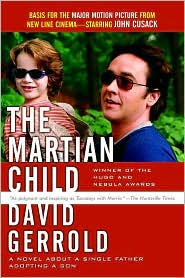
Gerrold, David. 2002. The Martian Child. Tor.
Toward the end of the meeting, the caseworker remarked, "Oh--and one more thing. Dennis thinks he's a Martian."
Why did I pick up The Martian Child? It was part impulse. It was on display in the 'popular book' section*. I don't know what I saw first: John Cusack's face, the word Martian, or those lovely little words "winner of the Hugo and Nebula Awards." But talk about an irresistible combination for me.
What is it about? It's about two people finding each other. Two people making a connection--a connection that is "against the odds" according to some. You see, David is a single guy (a gay man) who wants to adopt a child, a son. And Dennis is a young boy who has been in the foster care system for almost all of his life, and, well, even his caseworkers don't believe in him, don't like him. They're doing their jobs. But they don't like him, don't care about him, he's just a file to them. A thick file. A problem on their hands. But when David sees his picture, he feels something. His instinct tells him this is the one, this is my son. When David realizes he's the only one that cares about what happens to this little boy, well, let's just say that it's something worth reading about.
Did I enjoy this one? Yes. I read it in one afternoon. I couldn't put it down. It was an emotional story--it had its ups and downs. But from the very first page I cared. I loved the writing. It was incredible. David Gerrold knows how to tell a compelling story.
There isn't any way to stop telling stories. Storytelling is the fundamental act of communication. It's a major part of being human.
Every time a person communicates, he tells a little story--what happened to the last piece of chocolate cake, why the dog is wearing your sister's hat, and why the UFO's haven't returned Elvis yet. Big stories, little stories. Why I was late for work, why I was speeding, and how this phone number got into my wallet. I can explain everything. I can tell a story.
The stories we tell--that's us explaining how we think the world works. Once we speak it, once we say it aloud, that makes it real for us--and real for everyone else who hears it too. When we tell a story, we invite people to visit our reality. We invite them to move in. Our stories are the reality we live in.
That's very powerful.
Because we can choose what stories we want to tell--we can choose the stories we want to live.
Here's my story--
So do I recommend it? Yes! I really think this one has a lot to offer readers.
*There are times I doubt this section. Not all the time, I browse the shelves and see new books by 'big' authors, books making the rounds in the blog world, but then occasionally I'll find the odd book. A book that is older, much older. A book that makes me want to sing "one of these things is not like the others..." A book that makes me think the person shelving just didn't want to make the walk upstairs.
© Becky Laney of
Becky's Book Reviews

Anderson, M.T. 2002. Feed. Candlewick Press. 300 pages.
We went to the moon to have fun, but the moon turned out to completely suck.
Feed is both simple and complex; original and unique. Perhaps Titus sums it up best,
"it's about this meg normal guy, who doesn't think about anything until one wacky day, when he meets a dissident with a heart of gold...set against the backdrop of America in its final days, it's the high-spirited story of their love together, it's laugh-out-loud funny, really heartwarming, and a visual feast" (297).
Titus is our narrator and Violet is his love-interest. It all starts during spring break. On the moon. At a club. Titus, Violet, and a handful of other partying teens (mostly Titus' friends and classmates) are 'touched' by an old man. Their feeds--internal feeds--are hacked by this rebel. They broadcast--against their will--a doomsday message:
We enter a time of calamity. Blood on the tarmac. Fingers in the juicer. Towers of air frozen in the lunar wastes. Models dead on the runways, with smiles that can't be undone. Chicken shall rot in the aisles. See the pillars fall. (39)
They are taken into custody. Hospitalized. Examined to make sure that their feeds are fixed before they are fully reactivated. And all seems to be well..at first.
The feeds are responsible for so much. They deliver non-stop entertainment (music, movies, etc), non-stop advertisements and shopping opportunities, and instant connections with the world. Features such as chat and messaging, for example. Of course, with all this built into humanity--right inside the human brain--many things are being lost. Most importantly the ability to think critically, to make observations, to understand and perceive reality.
But as Titus interacts with Violet, he begins to think. And this scares him in a way. Overwhelms him. I'll be honest, Titus isn't always a lovable guy. He can be a real jerk. And Titus and his friends don't keep it clean. (So if 'bad' language offends you, then this is not the book for you.)
I'm not quite sure what to think of Feed. On the one hand, I think it's a smart novel. It challenges readers to think. To perhaps take more of an interest in the world around them. To think about cause and effect. To consider the big picture. Furthermore, it's well-written. Never for a minute do you doubt that this is Titus speaking. That this is Titus's world. The language. The dialogue. The style. Everything helps to establish this world Anderson is creating. But on the other hand, it's a bit of a downer. It's a bit sad, a bit cynical. Did I expect a happy ending? No. Would a happy ending work on this one? Never. I wouldn't think of changing it. This book tells the only story that it can tell.
© Becky Laney of
Becky's Book Reviews

Caletti, Deb. 2002. The Queen of Everything.
Deb Caletti. I personally think she has to be wise and observant on top of being ultra-talented. There is just something about the way she writes, something about her observations, that captures life so fully yet beautifully. Even when capturing the ugliness of life, she gives a turn of phrase so beautiful even if it is beautiful in that aching kind of way that it just resonates.
People ask me all the time what having Vince MacKenzie for a father was like. What they mean is: Was he always crazy? Did he walk around the kitchen with an ice pick in the pocket of his flannel bathrobe every morning as he poured himself a cup of coffee?
Some ask flat out, as if it's their right to know. Others circle it, talk about the weather first, thinking they're beings so sneaky when really they're as obvious as a dog circlking a tree.
When they ask, I always say the same thing. I say, "He was an optometrist for God's sake. You know, the guy who sits you in the big chair and says, 'Better here, or here?' The ones with the little pocket-size flashlights?'" And that's all I say. I try to keep it all in the tone of the voice. I don't even add a, If you must know, you insensitive jackass. Well I did say that once. I don't count it though, because it was to an old man who probably had bad hearing.
What I won't do is tell anyone what he was really like. (1)

Meet Jordan MacKenzie. Her father has committed a crime--a crime of passion. This is her story. Her unveiling of what happened that fateful summer that turned her world topsy-turvy. It's not a melodramatic story, more straightforward and down-to-earth than that.
Besides, that's not what people want to hear anyway--that my father was just a normal guy whom I loved, love, with all my heart. It makes them nervous. Because if he was normal, if he wore Old Spice and liked nacho cheese Doritos, then why not their own fathers? Or themselves? Deep Inner Evil--we like that. It's easier to accept than what Big Mama says, which is that wanting things for the wrong reasons can turn anyone's life into a marshmallow on a stick over a hot fire: impossibly messy and eventually consumed, one way or another. People want to think that I lay in bed awake at night, my heart pounding in fear of him. They don't want to know that I slept just fine, dreaming I'd forgotten my locker combination just like them.
Or that I went to live with Dad because he was the regular one; that it was my mom who I was convinced was nuts. (3)
I love her narrative. I love her voice. How real she seems. She's not a saint. She doesn't sugarcoat her mistakes--or her father's mistakes--she calls it as she sees it. While the book is her sharing about her relationship with her father--the effect his choices have had on her life--it is her story as well. About her relationships. With her mother, with her grandparents, with Big Mama, with her best friend, Melissa, and her best friend's brother, Jackson, and with her bad-boy semi-boyfriend, Kale.
© Becky Laney of
Becky's Book ReviewsIf you're reading this post on another site, or another feed, the content has been stolen.
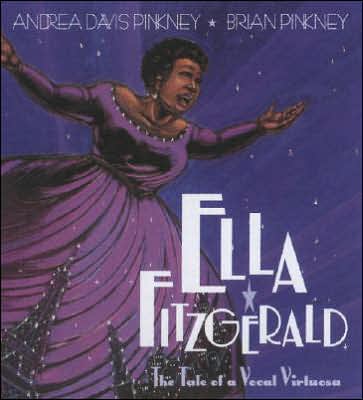
Pinkney, Andrea Davis. 2002. Ella Fitzgerald: The Tale of a Vocal Virtuosa.
I wish I could have loved Ella Fitzgerald as much as Duke Ellington. The previous picture book, Duke Ellington, was just a wonderful picture book biography. A nice blend of story, jazz, and magic. This one...well...what can I say...it doesn't quite work for me. I'll tell you why. It's narrated by a cat. I wish I could understand just why the author felt the need to insert a storytelling cat into the book, I really do. Because while the writing is nice--still rhythmic with touches of magic--the framework of the story just taints the experience for me.
You may think I look like any other cat.
But, baby, I'm in a class all by myself.
Scat Cat's my name. Scat Cat Monroe.
A name I've earned.
Got my name from knowin' Ella.
Ella Fitzgerald. The Queen of Scat.
What's scat? you ask.
Scat's the sound that don't hold back.
Ella's sound--that was scat.
Singing so supreme.
Music's velvet-ribbon dream.
Let me tell you Ella's story.
'Cause, you see, I was there. From the get-go.
I saw it all. Me. Scat Cat Monroe.
I watched Ella go from a small-town girl to the First Lady of Song.
To a Vocal Virtuousa, bar none.
I liked the language, the style. There's no denying Pinkney's great at knowing what to say, what word to use to get the right effect. I am just not feeling Scat Cat Monroe.
So I enjoyed this one. I didn't hate it. I hope I don't give off that impression. But I would have loved this one more if only...if only...
© Becky Laney of Becky's Book Reviews





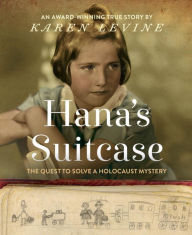
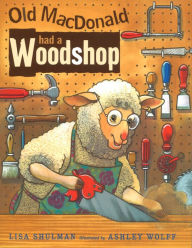
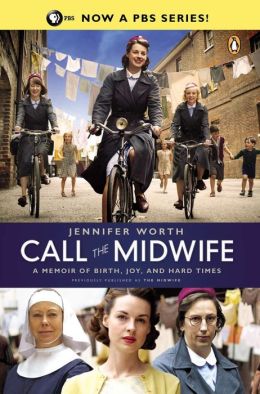
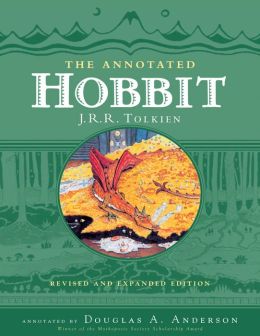
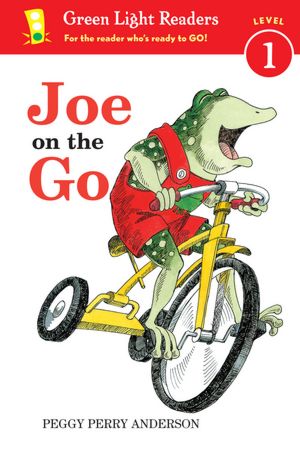
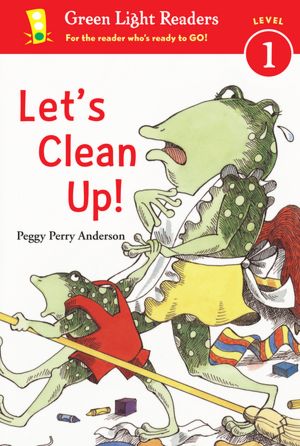
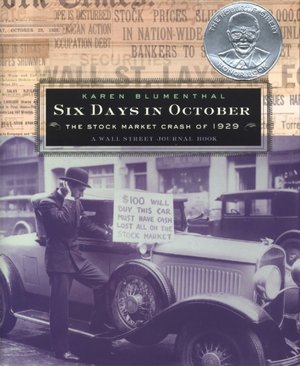


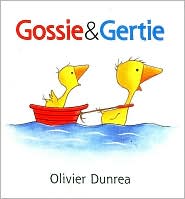
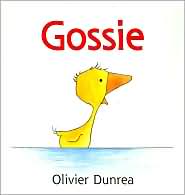






That's one awesome looking book. We read The Hobbit to our youngest daughter this spring, after watching the movie this winter. We were struck by the contrast and similarity as well!